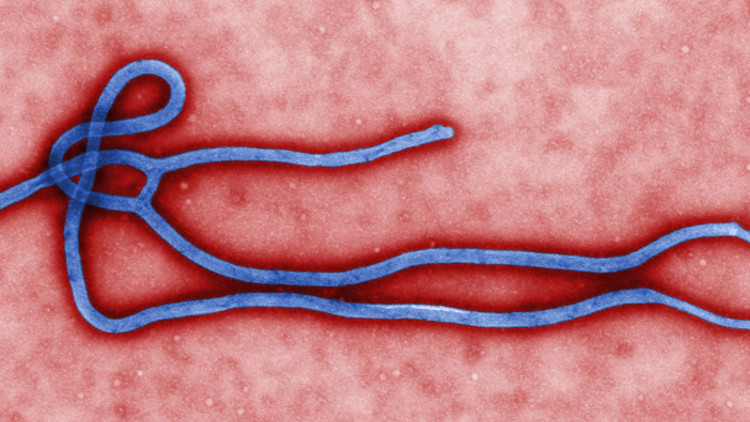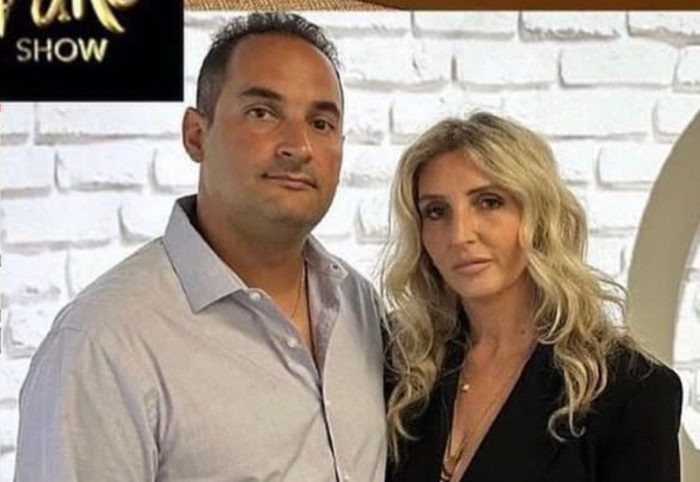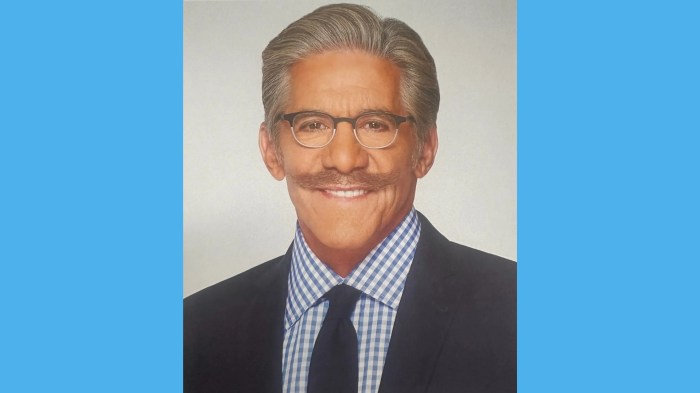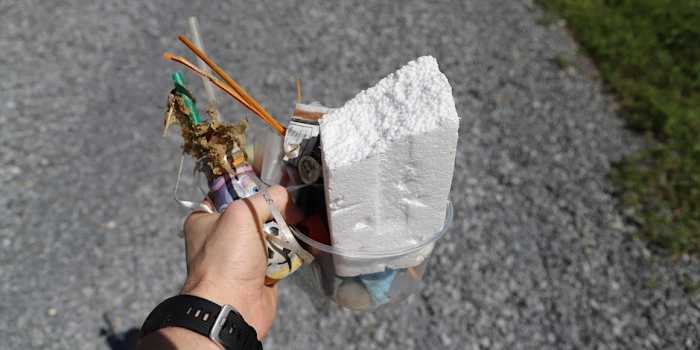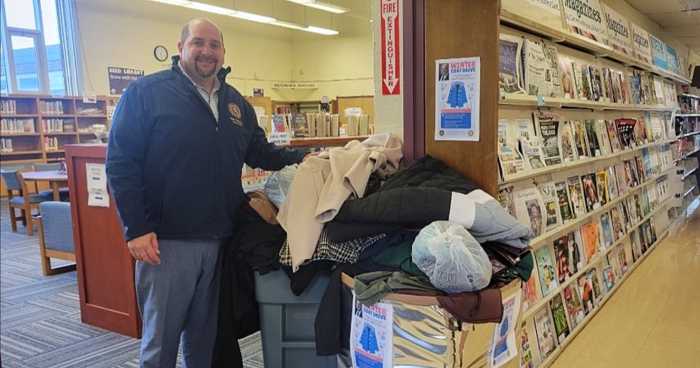Anyone who has worked in a maximum containment lab with Ebola virus has had that moment when a headache starts and you wonder: “Is this it? Did I do something wrong in lab? Did I infect myself?” Thankfully, that moment is short-lived; it is just a normal human reflex to worry about such a thing, but the truth is that rationally we all know that we didn’t infect ourselves.
Short of a prick with a needle full of virus, it is pretty much impossible for us to imagine how we would get infected with Ebola virus in a maximum containment lab. Actually, it is pretty difficult to imagine getting infected out in the real world, too. That is why the people who work with the virus are always willing to go to outbreaks. It is why, when my boss asked me to travel to Uganda in 2000 to be part of the International Ebola Response Team there, I didn’t worry about anything other than what size bugs might confront me. Seriously. It sounds crazy or stupid, but it is true.
I joined the Viral Special Pathogens Branch at the Centers for Disease Control and Prevention in Atlanta, because I loved studying RNA—biological molecules vital in human genetics. But I was interested in doing research that had a bit more of a human aspect to it than the enzyme kinetics stuff I had done in graduate school at Duke. So an RNA virus like Ebola virus seemed like the perfect choice. Its categorization as a Level 4 pathogen, combined with the fact that it was only identified in 1976, meant that not much was known about its molecular mechanisms yet. So there was plenty of work to be done.
During my interview for the position, I remember being at dinner with my future boss, Dr. Stuart Nichol, along with Dr. Jonathan Towner, who was a postdoc in the lab at the time (he has since become a full-time employee of the CDC and is often in the frontline of outbreak responders). Stuart explained to me that it was unlikely I would be sent to an outbreak; they were not that common and everybody wants to go into the field. That was fine by me. It never occurred to me that someone would want to be sent to Africa to respond to an outbreak; I just wanted to stay at the lab bench.
And I loved working in the lab at the CDC, especially the maximum containment lab (MCL). Everything about working there was perfectly organized and calm and intelligent. My bosses in the Special Pathogens Branch—Drs. Stuart Nichol, Tom Kziasek and Pierre Rollin—had made sure of it. The way we entered and exited the lab was perfectly scripted to keep us and the outside world safe. On the way in, there were well-thought through plans for the order and placement of changing into scrubs, sealing socks and gloves with tape, inserting ear plugs, putting on Biosafety Level 4 suits, hooking up to oxygen, going through the airlock, and cleaning the contaminated airspace behind us by running the decontamination shower and pulling on protective boots.
Once inside, everything was equally regimented. The first one in each day had to run through the checklist to make sure all the lab equipment was still working. But whenever you entered, it was always: hook up to oxygen, walk forward and sign in, turn right and check that the refrigeration units were working properly, and so on. In the MCL we were immediately surrounded by calm. We wore ear plugs to protect our hearing from the sound of the oxygen rushing into our suits, but we could still hear it—like a white noise machine. That meant it wasn’t easy to talk to other researchers in the lab, which made the time in the MCL private and centered.
So when Stuart asked me if I would be willing to go to Uganda as part of the team that was to replace our experts who had already been in country for several months, I talked it over with my husband and told Stuart yes the next day. I wasn’t particularly excited about the opportunity (still ridiculously worried about the size of the bugs!), but I wasn’t at all worried about getting Ebola virus.
I’m pretty sure I flew out on December 19, 2000, or else I arrived in Uganda or traveled up north on the 19th. That’s my father’s birthday and I remember thinking it wasn’t much of a present to have his daughter traveling to northern Uganda. I was stationed at St. Mary’s Lacor Hospital just outside of Gulu, Uganda. And as if Ebola virus wasn’t enough for my poor husband, parents and brothers to worry about, there was ongoing rebel activity in the area.
Gulu was the epicenter of the horrendous war waged by the Lord’s Resistance Army throughout the last decades of the 20th century and into the 21st. But it turns out rebels worry about Ebola virus, too—so they weren’t around while I was there. It was a strange thing to think that there was an upside to an outbreak of Ebola hemorrhagic fever.
There are a few different types of Ebola virus. The one I worked with most often back home in lab was called Zaire. It was originally identified in what is now the Democratic Republic of the Congo in 1976. It is this same virus that is infecting people in western Africa right now. And unfortunately, it is the type that causes the most death, with a fatality rate of about 90 percent. I felt lucky at the outbreak I was a part of because it was caused by Ebola Sudan, which has only a 50-percent fatality rate. Compared to Zaire, that seemed like good odds, which was good the one time I did feel a little sick while I was in Uganda. I figured that 50/50 were decent odds. But, just like back home, I knew rationally that I didn’t have Ebola. I was in charge of molecular diagnostics for the isolation ward at Lacor Hospital. This meant that I ran PCR (polymerase chain reaction) on blood samples that were already decontaminated by other lab workers.
Here’s how isolation worked during our outbreak. (The protocol is always the same, at every outbreak, because a lot of the same doctors show up to each outbreak due to there being so few experts in this field. Additionally, because this is the best way to prevent the spread of Ebola. So it will be the same at an isolation unit in western Africa right now. And it would be the same in the U.S. if needed.)
A person presents to the isolation ward and answers a series of questions posed to them by a person wearing scrubs, boots, gloves, goggles, a mask, one of those surgical hats that doctors wear, and an apron. The questions range from how the patient feels to whether anyone they have been in contact with was sick with Ebola. If a person has certain characteristics, such as a high fever with other concurrent symptoms, unexplained bleeding, or fever and contact with a person who was known to have Ebola hemorrhagic fever, they are admitted to the isolation ward. Once inside, a doctor sees the patient and can order blood to be drawn for testing if s/he thinks the patient should remain in the isolation ward. The blood is sent to the diagnostic lab. (In our case this lab was onsite at the same hospital, but that is not likely to be the case in western Africa right now given the geographical range of the outbreak. It also depends on the level of facility at the site of the isolation ward, and we were lucky to be at such a fine hospital with excellent lab facilities for sub-Saharan Africa.)
There are two tests used to confirm Ebola infection: an immunological test and a molecular test. The molecular test was first introduced during the outbreak I was part of, by Jonathan Towner—the postdoc who was in the first team to respond to that outbreak. The blood goes first to the people who do the immune assays—tests that can detect specific proteins—and they were the ones who would decontaminate a sample to hand out to me for the molecular diagnostics.
In Uganda, our “maximum containment lab” was a bit more primitive than at CDC headquarters in Atlanta. There were no submarine doors or decontamination showers, but there were portable personal protection suits and spray bottles full of Jik—the Ugandan brand of bleach—and a tray full of Jik to step through upon leaving the lab. And this is enough. As long as you don’t touch Ebola virus or get large droplets of it in your eyes or mouth, you won’t get infected.
Even the doctors treating the Ebola patients just use this basic barrier protection—the same outfit worn by the person in the screening tent outside of isolation. The boots protect feet against any potentially sharp objects (piercing the skin with an object contaminated with Ebola virus would be dangerous), the apron, gloves, mask and goggles protect the wearer from contact with Ebola virus and are all sprayed down with Jik upon leaving the ward, and the scrubs protect the street clothes underneath.
All the layers and protective equipment come off when a person leaves the lab or isolation ward. They are all discarded and incinerated, or completely decontaminated with Jik and washed. Ebola is easy to kill. It doesn’t like bleach or hospital-grade Lysol, so basic measures protect against transmission in a hospital setting.
By the time I got to Gulu, the outbreak was winding down. There were still people in isolation and I ran around 20 diagnostic PCRs each day for most of the 40 days I was there, but no one died at Lacor during that time.
The first team saw the worst of it and it was bad. It was the largest outbreak of Ebola virus up to that time and many people died. Lacor Hospital lost too many personnel, including Dr. Matthew Lukwiya, the doctor who was supposed to take over as the first Ugandan director of the hospital (New York Times Magazine published a beautiful article about him). No one ever really knows how the hospital infections of doctors or nurses occur, but it seems to be related to mistakes. It is awful to say this, because no one wants to know that a death was preventable, but on the other hand, it means that these infections and deaths don’t have to happen, and that is good.
In general, I would say that hospital personnel in the U.S. have extensive experience wearing gloves, masks and goggles. They are used to wearing them and know how to avoid self-contamination. I know this from working in lab. When I wear gloves I would never touch my face. I take off my gloves in a certain way to avoid touching the outside of them. I never lift goggles from my face to rub my eyes. These are habits that form over years of wearing protective equipment. Perhaps at Lacor Hospital the staff was not yet as adept at these habits. Plus, they were working in brutally hot conditions, under great emotion stress. On several occasions the nurses at Lacor thought about leaving the isolation ward but some always stayed, inspired by Dr. Matthew’s leadership. Maybe this is the same thing that happened to the American doctor and nurse who were recently infected. Maybe they were just dealing with the current epidemic under less-than-ideal conditions for too long. Maybe they didn’t have the supplies or protective equipment that they needed. Maybe the nonstop emotional stress allowed them to make one wrong decision.
This type of outbreak will never happen in the United States, in my opinion. And I am sure that anyone else who has experience with Ebola virus will tell you the same thing. Doctors and nurses in the U.S. already deal with infectious diseases that are much more easily spread than Ebola, without getting sick and without transmitting the virus to other patients. So once a patient with Ebola hemorrhagic fever is in one of our hospitals, containment should be simple: gloves, Lysol, masks. We even have special hospital units with glass windows protecting visitors from patients. We have procedures in place for autoclaving waste and decontaminating surfaces. Our hospitals are ready for this. Ebola just doesn’t get transmitted that easily from person to person.
So is there anything I am worried about? And why do I think the outbreak in western Africa is so big and has been going on for so long? I’m worried that citizens in the U.S. would never be as forthcoming about turning themselves in for isolation as the people in northern Uganda were. And I think this is the crux of the problem in western Africa today.
Remember I said the path to isolation starts when a person presents to the isolation ward? Well, that step is essential. The reason I’m not worried about the two people being treated for Ebola virus in the United States right now is that they are in a hospital being cared for by experts. Not only does it increase their chance of fighting the disease—because they will get the best support possible—but it decreases the chances of anyone they love getting the disease.
These two did the right thing. When they thought they had Ebola they followed the normal procedures and went into isolation. At Lacor Hospital, I saw the same thing. People there trusted their hospital. Lacor Hospital was one of the only graces in that rebel war-torn area for decades. The hospital wasn’t just a place to go for superb medical care, it offered a safe place for children to sleep at night to avoid abduction by the rebels. The people of northern Uganda knew that Lacor cared for them. They trusted that the doctors, nurses, and directors of Lacor would do what was best for them, just like they always had in the past. I suspect the same is not true throughout the afflicted countries in western Africa. We have all heard reports of people there fleeing from health care workers. And that is certainly one reason it is so difficult to get that outbreak under control.
I hope the same thing would never happen in the United States, but I suppose it is possible.
If a person was found to be infected with Ebola here in the U.S., teams of epidemiologists would be assigned to track down every single person who had any recent contact with that patient. Each of these ‘contacts’ would be questioned, in person, every day, about any potential symptoms of illness. This would go on for 21 days—the longest time that Ebola virus has ever been found to live inside a person. And at the end of that time, if no one else got sick, we would all be safe. If one of the contacts did get sick, he would be hospitalized and all of his contacts would be traced for 21 days.
In the U.S., we have the infrastructure and capacity to do this. And our hospitals are used to containing diseases, especially those that are not airborne and are easily decontaminated. But I do worry a bit that people would not take well to being tracked by government employees for 21 days. Or that they would refuse to bring themselves to the isolation ward. I was always impressed that the people in Uganda did that so willingly, knowing they might never see their loved ones again. But they took to heart the fact that it was the best way to protect these loved ones from the same fate.
Another reason the outbreak I witnessed was contained so well was that the message from the Ugandan Ministry of Health, from Lacor Hospital, and from all the international responders, was clear and consistent: Avoid bodily fluids. Do not continue with traditional funeral ceremonies that involve cleansing of the dead body. If you are sick, go to the doctor so you don’t get your loved ones sick.
The message was on radio stations, announced from PA systems mounted on cars driving up and down roads, posted everywhere. I have a T-shirt with a person holding another person who is vomiting, all in a circle with a big X through it—don’t touch bodily fluids.
But I know that must be hard. And that is a concern.
I think about what I do when one of my sons is sick. I cuddle them and kiss them (even though they are getting too old for that, they can’t protest as much when they are sick!). I wipe their feverish brows with damp cloths, and yes, I hold containers for them to vomit into and then I clean up. What if one of them had Ebola? It is definitely possible, although not guaranteed, that I would get infected from him. Which is why it is so important that I know if there is any chance he is suffering from Ebola.
I do worry a little about these things—about the likelihood that U.S. citizens would subject themselves to contact tracing or hospital isolation. These are the main weapons we have against an epidemic of Ebola hemorrhagic fever anywhere, and it does concern me a bit that here, where we have the best hospitals and doctors trained to handled just such an infection, we might hesitate to use them for selfish reasons. But I also have hope that we will. Because I know the types of people who are involved in the tracing and in running the isolation wards. They are good, kind people who truly care. They are intelligent and patient. In the end, I do have confidence that we will rely upon our experts if that necessity ever arises.
But I have gone off on a tangent, talking about what would happen in the case of an actual epidemic, because I am actually not worried that there will ever be a full-out outbreak of Ebola virus in the U.S. Maybe the fact that I talked about what it would look like anyway will help convince you that the people who work with Ebola virus are prepared for any scenario.
They are thinkers. They are planners. They have a worse-case scenario plan in mind that takes into account the fact that we are human beings who deserve to be treated with respect and love and thoughtfulness. But they also realize that really, this is a plan that will likely never be implemented.
With today’s air travel it is completely possible that a person with Ebola virus will enter the United States. But this virus is just not that easily transmitted. A person infected with it, but not yet showing symptoms, cannot pass the infection on to someone else. Once they have symptoms they can, but still, the virus is not airborne. And we don’t have a tradition in the U.S. of washing dead bodies at home, or of welcoming friends and family of the deceased to take part in such a ceremony. So overall, I see the chance of a person in the U.S. passing an Ebola infection to a large number of people as astronomically low. And while a single person being infected and/or passing that on to another single person is scary and desperately sad, it is really no scarier, no sadder than the limited transmission of any other high-mortality infectious disease in our country.
I still study Ebola virus at the lab bench, but now just a small, noninfectious part of it. I am still fascinated by it. After having been to an outbreak, I try to be more cognizant that it is not just a fascinating virus but also a life-changer for whole communities. Lacor Hospital and the people of northern Uganda suffered enormously as a result of Ebola virus. Just as I am certain that people living in western Africa, and people who live in the U.S. but love people living there, must be suffering, both physically and emotionally now.
In the case of the Ugandan outbreak, I would like to think that some good came of it.
There was a lot of international press about the outbreak and about Lacor Hospital. It was already the recipient of numerous international healthcare and humanitarian awards, but more still came in afterwards. They were finalists for the Hilton Humanitarian Prize in 2007 because they deserved it, and since I had been there and witnessed its excellence I wrote the nomination letter for Lacor. In 2001, USAID began distributing the funding promised by Secretary of State Madeleine Albright to Lacor Hospital. These funds built the beautiful new children’s ward and laboratory facilities at the hospital. In 2013, the nurses of Lacor won the prestigious Sigma Theta Tau Nursing Society Award.
And I hope that the founding of Social Promise, the nonprofit that I direct, will continue to provide Lacor Hospital with funds to operate for years to come.
Sharon McGee Crary is the Percy L. Julian Associate Professor of Chemistry and Biochemistry at DePauw University & Co-founder and President of the Board of Directors at Social Promise, a nonprofit that partners with Ugandan nonprofits to help provide critical health and educational resources to their local communities. She traveled to northern Uganda in 2000 as a member of the Viral Special Pathogens Branch at the Centers for Disease Control and Prevention to help diagnose cases of Ebola hemorrhagic virus—the often fatal illness currently gripping West Africa—during a deadly outbreak that claimed more than 400 lives.




